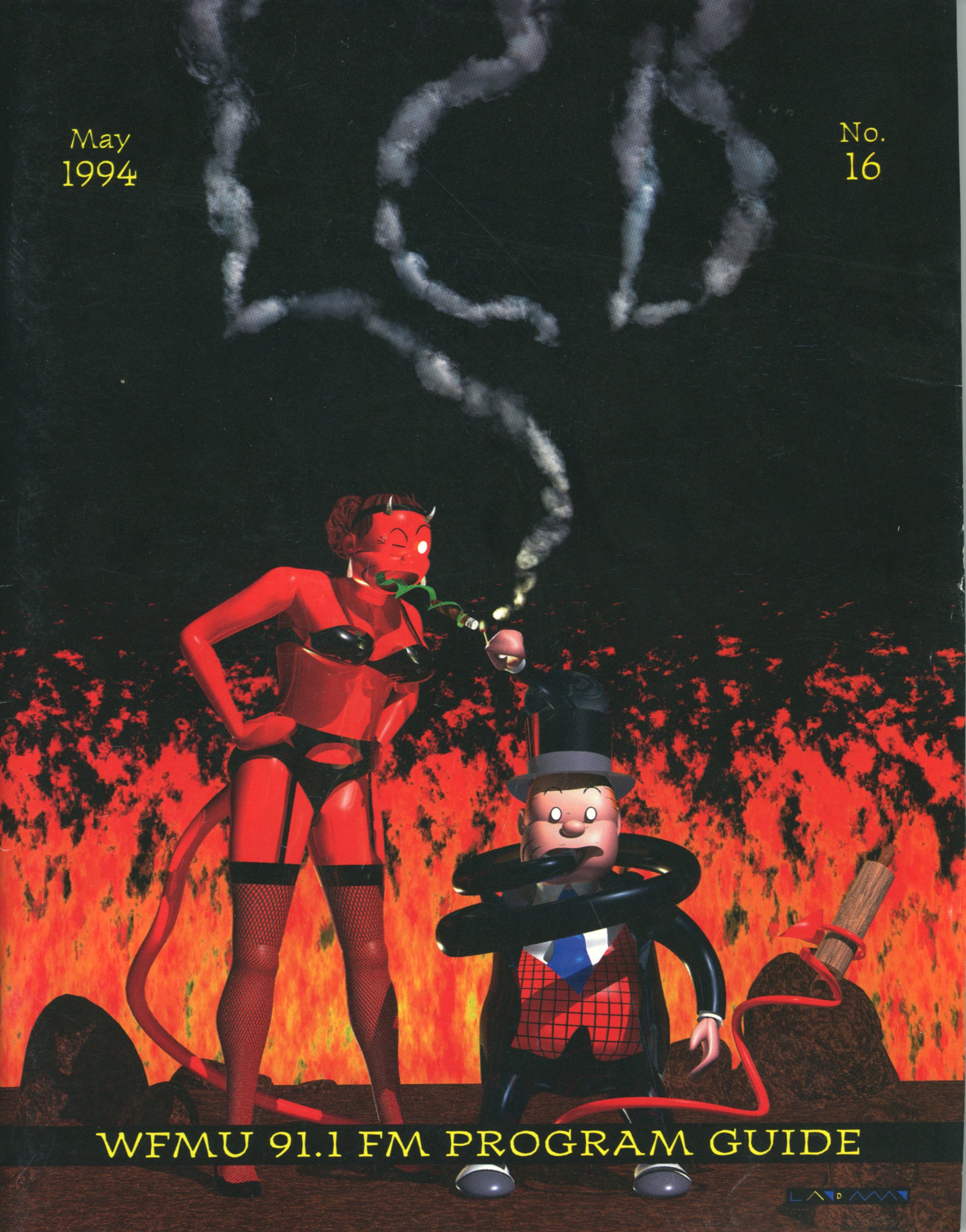LCD (Lowest Common Denominator), 18-27 (1997-2001)
Filed under magazine | Tags: · art, community radio, music, music history, radio, sound art, sound recording

“Named the best radio station in America by Rolling Stone magazine four years running, WFMU is considered the alternative radio station. The New York-area noncommercial, free-form station features programming ranging from pure rock and roll to flat-out uncategorizable strangeness such as cooking instructions, off-kilter kids’ music, and spoken-word mash-ups. LCD (Lowest Common Denominator), the station’s program guide–begun in 1986 as a visual counterpart to WFMU’s oddball programming–was a wicked cocktail of satire, cultural news, alternative history, and provocative artwork that quickly gained noteriety and earned its own devoted cult following.”
Comment (0)Lars Nyre: Sound Media: From Live Journalism to Music Recording (2008)
Filed under book | Tags: · journalism, mass media, music, music history, popular culture, public broadcasting, radio, sound recording

Sound Media considers how music recording, radio broadcasting and muzak influence people’s daily lives and introduces the many and varied creative techniques that have developed in music and journalism throughout the twentieth century. Lars Nyre starts with the contemporary cultures of sound media, and works back to the archaic soundscapes of the 1870s.
The first part of the book devotes five chapters to contemporary digital media, and presents the internet, the personal computer, digital radio (news and talk) and various types of loudspeaker media (muzak, DJ-ing, clubbing and PA systems). The second part examines the historical accumulation of techniques and sounds in sound media, and presents multitrack music in the 1960s, the golden age of radio in the 1950s and back to the 1930s, microphone recording of music in the 1930s, the experimental phase of wireless radio in the 1910s and 1900s, and the invention of the gramophone and phonograph in the late nineteenth century.
Sound Media includes a soundtrack CD with thirty-six examples from broadcasting and music recording in Europe and the USA, from Edith Piaf to Sarah Cox, and is richly illustrated with figures, timelines and technical drawings.
Publisher Routledge, an imprint of Taylor & Francis, 2008
ISBN 041539113X, 9780415391139
221 pages
PDF (updated on 2012-8-3)
Comment (0)Paul Griffiths: Modern Music and After, 3rd ed (2011)
Filed under book | Tags: · composing, electroacoustic music, electronic music, music, music history, musique concrète, sound recording

Over three decades, Paul Griffiths’s survey has remained the definitive study of music since the Second World War; this fully revised and updated edition re-establishes Modern Music and After as the preeminent introduction to the music of our time. The disruptions of the war, and the struggles of the ensuing peace, were reflected in the music of the time: in Pierre Boulez’s radical reformation of compositional technique and in John Cage’s development of zen music; in Milton Babbitt’s settling of the serial system and in Dmitry Shostakovich’s unsettling symphonies; in Karlheinz Stockhausen’s development of electronic music and in Luigi Nono’s pursuit of the universally human, in Iannis Xenakis’s view of music as sounding mathematics and in Luciano Berio’s consideration of it as language. The initiatives of these composers and their contemporaries opened prospects that haven’t yet stopped unfolding.
This constant expansion of musical thinking since 1945 has left us with no singular history of music; Griffiths’s study accordingly follows several different paths, showing how and why they converge and diverge. This new edition of Modern Music and After discusses not only the music of the fifteen years that have passed since the previous edition, but also the recent explosion of scholarly interest in the latter half of the twentieth century. In particular, the book has been expanded to incorporate the variety of responses to the modernist impasse experienced by composers of the 1980s and 1990s. Griffiths then moves the book into the twenty-first century as he examines such highly influential composers as Helmut Lachenmann and Salvatore Sciarrino.
For its breadth, wealth of detail, and characteristic wit and clarity, the third edition of Modern Music and After is required reading for the student and the enquiring listener.
– Provides the most comprehensive study in English of musical composition from 1945 on
– Offers a keen examination of how important composers have responded to the constant flux of their cultural environs, both socially and technically
– Griffiths is considered by many in the field the finest writer on modern “classical” music in the English language today
Publisher Oxford University Press, 2011
ISBN 0199792828, 9780199792825
480 pages
PDF (updated on 2012-8-3)
Comment (0)
